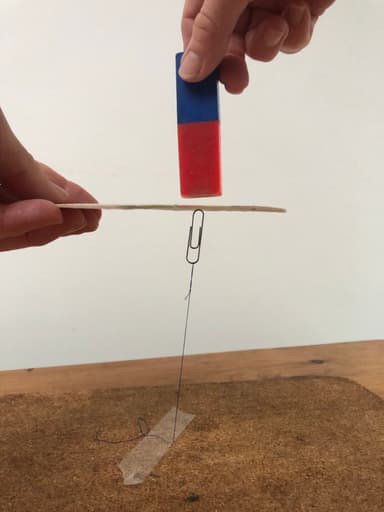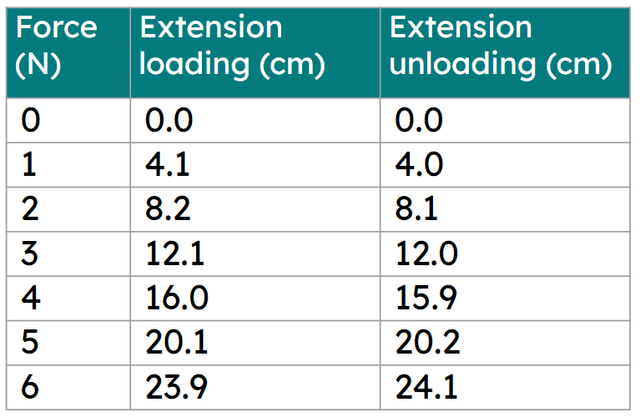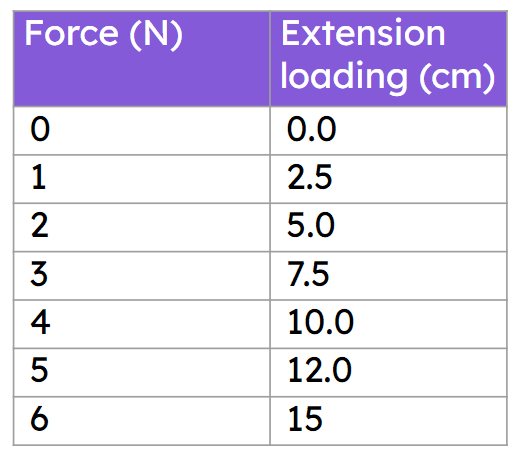Myths about teaching can hold you back
- Year 9
Stretching springs
I can measure extensions of a spring for a good range of stretching forces.
- Year 9
Stretching springs
I can measure extensions of a spring for a good range of stretching forces.
These resources will be removed by end of Summer Term 2025.
Switch to our new teaching resources now - designed by teachers and leading subject experts, and tested in classrooms.
These resources were created for remote use during the pandemic and are not designed for classroom teaching.
Lesson details
Key learning points
- Applying a force to a spring will make it extend (stretch).
- A range of masses suspended on a mass holder will produce constant and measurable forces on a spring.
- A set square ensures measuring scales are vertical.
- Diagrams show how equipment should be set up.
Keywords
Extension - The extension of a spring is the change in length.
Gravitational force - Masses will have a gravitational force that pulls them downwards.
Hanging masses - Hanging masses (weights) can be used to put a known force onto a spring.
Mass hanger - A mass hanger can be attached to a spring; adding masses to it causes the spring to stretch in a controlled way.
Common misconception
The length of the spring is equal to the extension of the spring.
Focus on the fact that forces cause the length of the spring to change and pupils are measuring the size of that change.
To help you plan your year 9 science lesson on: Stretching springs, download all teaching resources for free and adapt to suit your pupils' needs...
To help you plan your year 9 science lesson on: Stretching springs, download all teaching resources for free and adapt to suit your pupils' needs.
The starter quiz will activate and check your pupils' prior knowledge, with versions available both with and without answers in PDF format.
We use learning cycles to break down learning into key concepts or ideas linked to the learning outcome. Each learning cycle features explanations with checks for understanding and practice tasks with feedback. All of this is found in our slide decks, ready for you to download and edit. The practice tasks are also available as printable worksheets and some lessons have additional materials with extra material you might need for teaching the lesson.
The assessment exit quiz will test your pupils' understanding of the key learning points.
Our video is a tool for planning, showing how other teachers might teach the lesson, offering helpful tips, modelled explanations and inspiration for your own delivery in the classroom. Plus, you can set it as homework or revision for pupils and keep their learning on track by sharing an online pupil version of this lesson.
Explore more key stage 3 science lessons from the Hidden forces unit, dive into the full secondary science curriculum, or learn more about lesson planning.

Content guidance
- Risk assessment required - equipment
Supervision
Adult supervision required
Licence
Prior knowledge starter quiz
6 Questions
Q1.Somebody slides down a slide. What force is causing them to speed up as they slide?
Q2.Somebody slides down a slide. What two forces are opposing the motion as they slide?
Q3.Which of the following can a force do to an object?
Q4.Some masses are placed on a balance. Which force acts downwards on the masses?
Q5.The image shows a newton meter which has a spring inside it. Why is a spring used in the newton meter?

Q6.The picture shows a steel paperclip on some thread being attracted by a magnet. The paperclip is stationary. Which statements must be true?

Assessment exit quiz
6 Questions
Q1.Match the key words and phrases to their explanation.
The change in length of an object when a force acts on it.
A force that pulls objects downwards due to their mass.
Metal discs used to produce forces on a spring.
This is used to attach masses to the end of a spring.
Q2.A spring is 10 cm long when there is no force on it. What is its length when it has been extended by 5 cm?
Q3.Which of these allows the readings from a ruler to be used to measure the extension of a spring directly?
Q4.The table shows the results of an experiment to find out how a spring extends. How do the results show that the measurements have been made accurately?

Q5.The table shows the results of an experiment to find out how a spring extends. Which statements can be made from the results?

Q6.The table shows how a spring extends. The spring was originally 10 cm long. Use the results to predict the length of the spring when a force of 10 N is acting on the spring.



